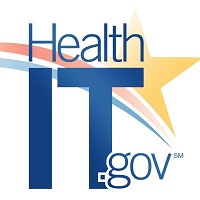 By Talisha Searcy, Yuriy Pylypchuk, Wes Barker and William Encinosa, ONC
By Talisha Searcy, Yuriy Pylypchuk, Wes Barker and William Encinosa, ONC
Twitter: @ONC_HealthIT
ONC is excited to share findings from newly published research that sheds light on the impact adoption of 2015 Edition certified health information technology (health IT) has had on hospitals’ rates of interoperability. In a recently published Journal of the American Medical Informatics Association article called Impact of the 2015 Health Information Technology Certification Edition on Interoperability among Hospitals, we examined how variation in the adoption of 2015 Edition certified health IT impacted key measures of interoperable exchange. Our findings — described in detail in the article and summarized below — show that the availability of data exchange capabilities in EHR systems significantly contributes to greater interoperability in addition to other factors such as user and business motivation.
The ONC Health IT Certification Program has become an important part of the health IT ecosystem focused on standards conformance to facilitate improved health data interoperability for patient care and patient access. Currently, nearly all hospitals and 80 percent of physicians have adopted electronic health records (EHRs) certified through the Program. Six years ago, ONC released the 2015 Edition Health IT Certification Criteria, which updated several key standards requirements, including the Applicability Statement for Secure Health Transport (i.e., Direct Protocol) and the Consolidated-Clinical Document Architecture (C-CDA) standards.
Interoperability on the Rise
Our research showed that nearly 40 percent of hospitals adopted the 2015 Edition certified health IT between 2016 and 2018, which increased interoperability engagement by 18 percent.
Hospitals that switched to different EHR developers had higher interoperability gains from adopting the 2015 Edition technology than those who did not. Between 2014 and 2018, hospitals’ rates of interoperability doubled from 23 percent to 46 percent and findings from the study indicate that the adoption of 2015 Edition certified health IT was responsible for 11 percent of that increase.
Despite fairly large effects of 2015 Edition certified health IT adoption, the study highlights that adoption can only go so far at expanding interoperable exchange across hospitals. The study forecasted the interoperability rates of hospitals across various adoption rates of the 2015 Edition certified health IT. The results indicate that between 53 percent and 61 percent of hospitals would routinely engage in interoperable health information exchange if they had all adopted the 2015 Edition certified health IT.
More recent data found that 90 percent of hospitals had adopted 2015 Edition certified health IT by the end of 2019. According to this research, 55 percent of hospitals were able to electronically send, receive, find, and integrate patient summary of care records from sources outside their health system. This work validates our forecast estimates. It also provides additional evidence that while the adoption of the 2015 Edition certified health IT resulted in interoperability gains, more still needs to be done to achieve widespread success.
Building on Interoperability Gains
ONC continues to take action to build upon the 2015 Edition to promote data standards, improve data exchange, and achieve widespread interoperability.
In 2020, the ONC Cures Act Final Rule established the core health data needed to be supported by all certified health IT developers and the means by which these data must be available to patients and clinicians. Known as the United States Core Data for Interoperability (USCDI), this new standard of standards specifies a set of health data classes and constituent data elements for nationwide, interoperable health information exchange. (The USCDI version 2 was finalized recently.)
In addition to identifying the USCDI, ONC also established a new Certification Criterion to make the data included as part of the USCDI available via secure, standardized application programming interfaces (API) for patient and population services. Together, these new aspects of the 2015 Edition will support an ecosystem of applications, improve interoperability, and position patients, clinicians, and researchers to manage health data in more modern ways.
Building upon this work to further evaluate and measure the effects of these policy changes on interoperability is imperative. Quantifying the impact of federal policy is a foundational principle of the Foundations for Evidence-based Policymaking Act of 2018, and ONC is continually focused on bettered understanding the impact of our policies to inform future decision-making and rulemaking.
This article was originally published on the Health IT Buzz and is syndicated here with permission.
